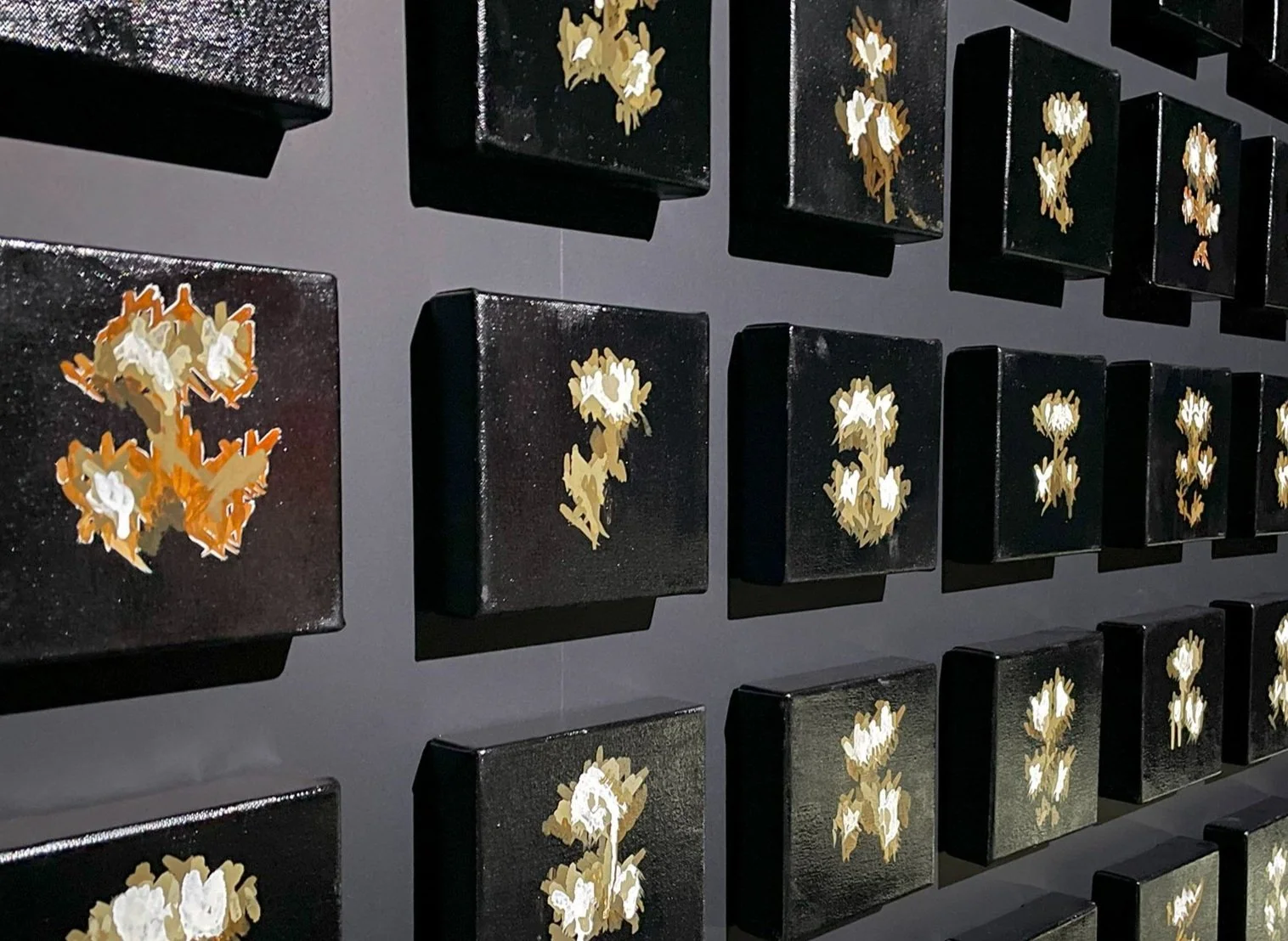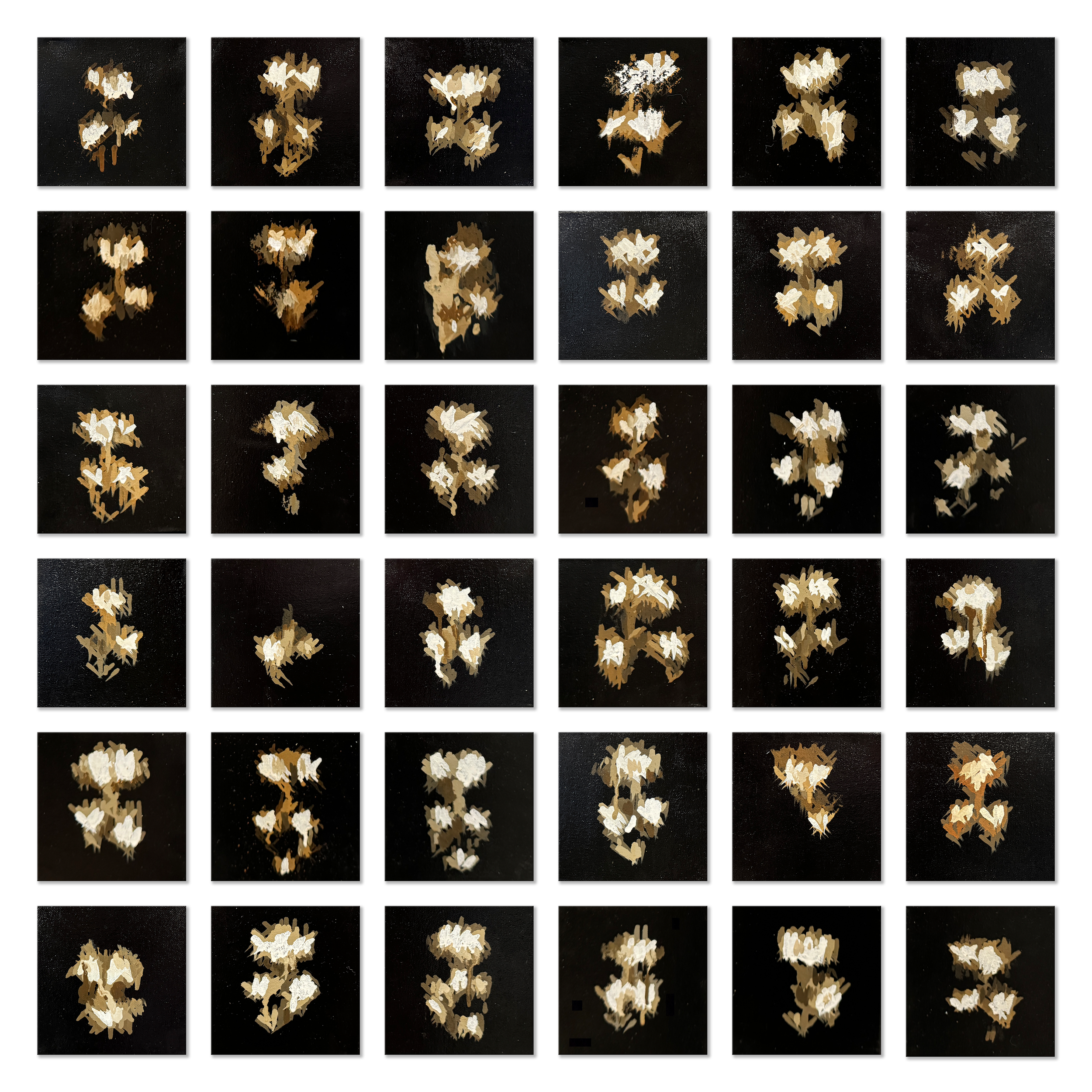AI Imagined Faces
A robot was given simple yet profound instructions:
1: Try to imagine a face and paint it on a canvas.
2: Stop painting the moment a face is detected.
The algorithm was inspired by conversations artist Pindar Van Arman had with Harold Cohen. Cohen, a pioneer in artificial creativity, held the belief that all claims of AI “creating” imagery were false. Instead, he insisted that AI merely acted as a filter of preexisting imagery, no more special than a Photoshop filter. But Van Arman began working with a new kind of neural network called GANs (Generative Adversarial Networks) and noticed that they were “imagining” things very similar to how humans imagined. He shared this view with Cohen and tried to convince him that maybe machines could finally be creative.
Cohen passed in 2016 before they could finish their conversation, but his critiques ultimately sparked a series where Van Arman's robots began to truly be creative. The synthetically creative systems that emerged are an attempt to see the world through the eyes of AI.
AI Imagined Faces consists of 64 unique canvases from this groundbreaking series. Historically, works in this series are the first examples of paintings autonomously created from neural networks.
Unique paintings from this period of Van Arman’s career have been shown around the world, awarded first place in RobotArt 2018, and accepted into LACMA’s permanent collection. This polyptych consists of sixty-four canvases from the artist’s personal collection.
AI Imagined Faces
Pindar Van Arman
Acrylic on Canvas
64 6 by 6 in. 15.25 by 15.25 cm. canvases
Total Dimensions 41 by 41 in. 104 by 104 cm.
Executed in 2023




